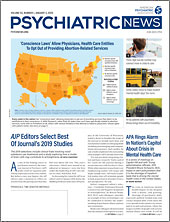Frequent marijuana use and cannabis use disorder (CUD) appeared to increase among adults 26 and older following recreational marijuana legalization, according to a study in the November 2019 JAMA Psychiatry. The risk of CUD also increased slightly among adolescents, while no associations were noted among those aged 18 to 25.
“[T]he potential for frequent use and CUD is an important public health concern that warrants ongoing study and investment in substance use prevention and treatment to prevent unintended harm,” wrote lead author Magdalena Cerdá, Dr.P.H., an associate professor at NYU Grossman School of Medicine, and colleagues.
The study used 2008-2016 data from the National Survey on Drug Use and Health (NSDUH), which divided 505,796 respondents into three age groups: adolescents (aged 12 to 17), young adults (aged 18 to 25), and adults (older than 26).
The authors looked at the prevalence of past-month marijuana use, frequent marijuana use (defined as using marijuana for at least 20 days in the past month), and past-year CUD following recreational marijuana legalization. Four states legalized the drug recreationally during the study period (Alaska, Colorado, Oregon, and Washington), but data from all 50 states were used “to control for nationwide trends in marijuana use,” the study stated.
The researchers found the following among adults in the period following recreational legalization:
•
Past-month marijuana use increased from 5.65% to 7.10%.
•
Frequent use increased from 2.13% to 2.62%.
•
Past-year CUD increased from 0.90% to 1.23%.
Among adolescents, legalization was followed by a slight increase in CUD prevalence, from 2.18% to 2.72%. “This increase was 25% higher than that for participants in the same age group with no [recreational marijuana legislation] enactment,” the authors wrote.
“The results will provide fodder for legalization advocates and opponents alike, but taken as a whole, they suggest a more nuanced view,” wrote Richard Grucza, Ph.D., M.P.E., a professor of psychiatry at Washington University School of Medicine, and Andrew Plunk, Ph.D., an associate professor in the Department of Pediatrics at Eastern Virginia Medical School, in an accompanying commentary. “Legalization does not seem to have thus far resulted in large increases in the prevalence of past-year cannabis use among adolescents and young adults.”
The more concerning finding “from a public health perspective,” Grucza and Plunk agreed, is the increase in frequent cannabis use and CUD among adults. “Assuming eventual legalization in most or all states, these estimates suggest that the number of adults who use cannabis on most days will increase by a million or more and that the number of those who are unable to control their use will increase by hundreds of thousands.”
The authors noted some limitations to the study, such as that respondents may be more likely to report marijuana use following legalization. Additionally, frequency of use and CUD are only two dimensions of marijuana use, and future studies should look at additional measures to determine changes in use.
While the study advances the literature on the impact of marijuana legalization, David Gorelick, M.D., Ph.D., a professor of psychiatry at the University of Maryland School of Medicine and editor-in-chief of the Journal of Cannabis Research, agreed with the authors: More research on longer-term impacts should be conducted.
Gorelick said there is still a misconception among the public that cannabis is a benign drug with no harmful effects. “More people need to realize that we have to approach cannabis as we would any other potent psychoactive drug,” he said. “That doesn’t necessarily mean it should be completely banned or that it might not have any therapeutic use, but you have to look at it in a balanced way.”
The study was funded by a grant from the National Institute on Drug Abuse. ■
“Association Between Recreational Marijuana Legalization in the United States and Changes in Marijuana Use and Cannabis Use Disorder From 2008 to 2016” is posted
here. “Where Is Cannabis Legalization Leading?” is posted
here.

